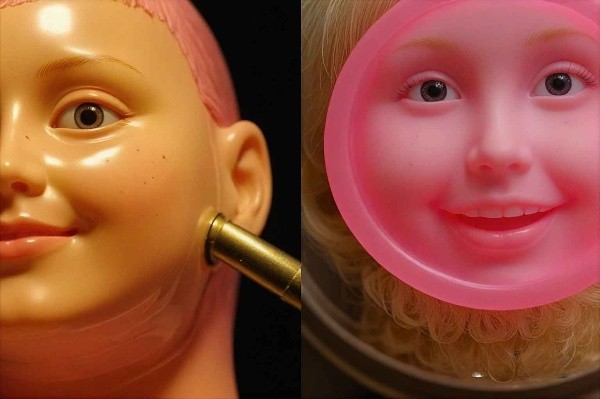A Breakthrough in Biohybrid Robotics
In a remarkable advancement in robotics, Japanese scientists have successfully developed a technique to graft self-healing, living skin onto a robotic face, enabling it to smile. This innovative research, led by Professor Shoji Takeuchi at the University of Tokyo’s Biohybrid Systems Laboratory, marks a significant step towards creating more realistic humanoid robots.
The team utilized cultured skin tissue designed to resemble a human face, which they attached to an actuator—an external mechanical device—using specialized “anchors” that mimic the ligaments found in human skin. This method allows the skin to move fluidly without tearing or bunching, a common issue in previous attempts to attach human cell-derived tissue to solid surfaces.
The Science Behind the Smile
In a demonstration video, the researchers showcased their ability to manipulate the living skin into a smile, highlighting the tissue's resilience and flexibility. While the resulting prototype may resemble a cartoonish character more than a human face, the implications of this technology are profound. Takeuchi expressed optimism about the future, stating, “Our cultured skin aims to replicate the full range of biological functions found in human skin, including the activity of facial muscles, sweat glands, and blood vessels”.
This comprehensive functionality could lead to robots that not only look more lifelike but also interact more effectively with humans, enhancing communication and emotional expression. The potential applications for such technology are vast, ranging from healthcare to companionship roles, where robots could provide emotional support and assistance.
Future Prospects and Challenges
Despite the promising results, Takeuchi cautioned that achieving a fully realistic robotic skin will take time. Significant advancements are still needed in areas such as texture, color, and the integration of biological components. He noted, “While we aim to create more lifelike robots, our goal is to enhance their utility and interaction capabilities”.
Rafael Mestre, a principal investigator at the University of Southampton’s Biohybrid Futures project, echoed this sentiment, emphasizing the importance of careful evaluation of the tissue produced for robotic applications. He pointed out that the interaction between skin cells and robotic surfaces is still in its early stages, and the first implementations may involve simpler biohybrid robots rather than fully humanoid forms.
Ethical Considerations and Societal Impact
As the field of biohybrid robotics evolves, ethical concerns surrounding the technology are becoming increasingly prominent. Researchers have called for the establishment of regulatory frameworks and ethical guidelines to address potential issues related to human-robot interactions, the integration of biorobots into human bodies, and the moral status of these entities.
Takeuchi acknowledged the need for responsible development, stating, “While creating lifelike robots offers many benefits, we must carefully consider the implications and maintain transparency and control over their development and deployment”. Mestre raised additional concerns about the societal impact of such technologies, questioning whether they could exacerbate inequalities or disrupt ecological systems if released into the wild.
Conclusion
The development of a smiling robot with living skin represents a significant milestone in the quest for more human-like robots. While the technology is still in its infancy, the potential for creating robots that can express emotions and interact with humans in a more natural way is both exciting and daunting. As researchers continue to explore the possibilities of biohybrid robotics, it is crucial to engage in discussions about the ethical implications and societal impacts of these advancements, ensuring that the future of robotics aligns with our values and aspirations.








